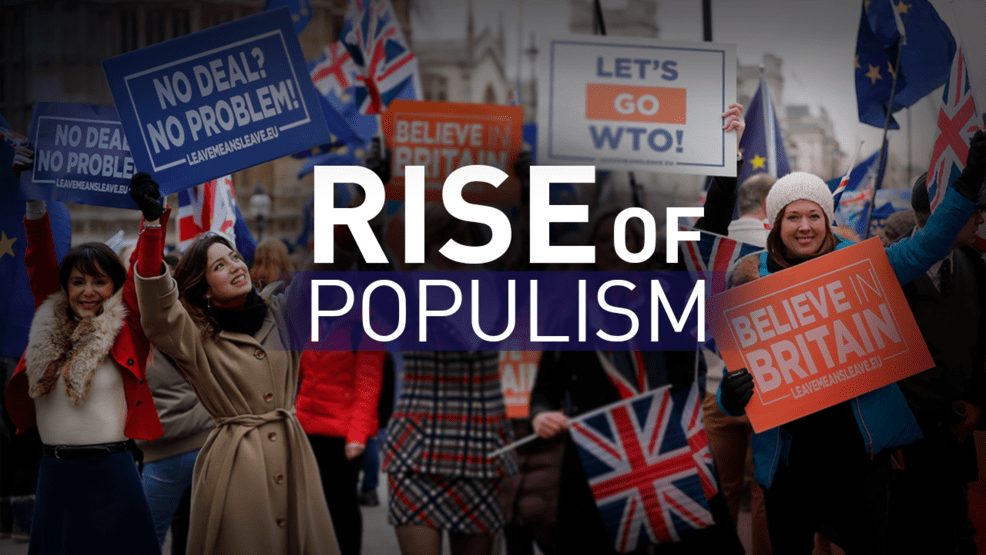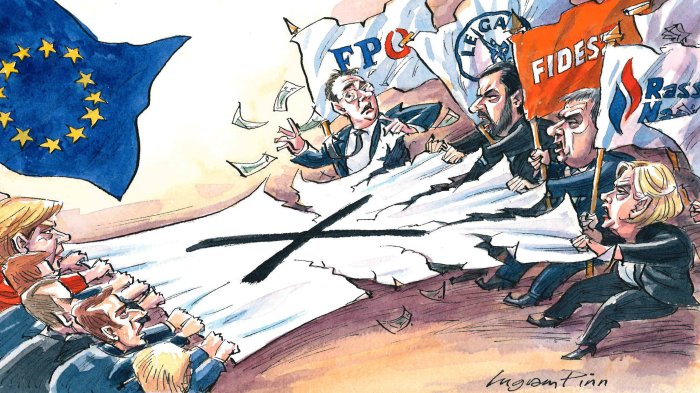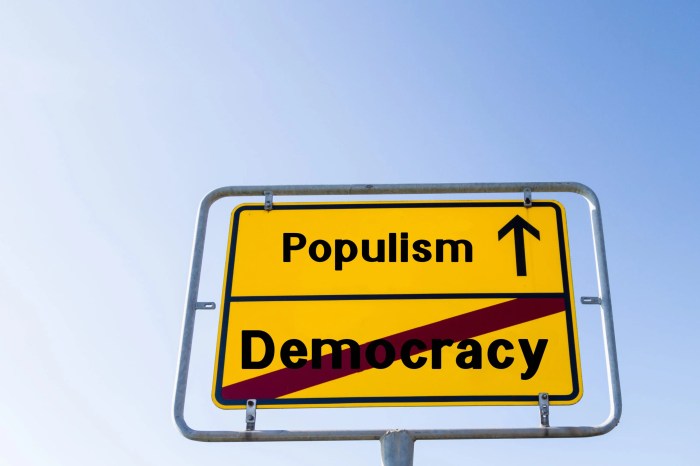Embark on an enlightening journey with The Rise of Populism Quiz, a captivating exploration into the origins, characteristics, and manifestations of populism. This quiz unravels the historical roots of populism, delving into the lives of key figures and showcasing past populist movements.
Uncover the defining traits of populism, including its core characteristics, the concept of “the people,” and the role of charisma in populist movements. Discover the complex interplay of economic, social, and political factors that fuel the rise of populism, including the impact of globalization, inequality, and political polarization.
Historical Context

Populism has deep roots in history, dating back to the late 19th century. It emerged as a response to rapid industrialization and urbanization, which led to widespread economic inequality and social unrest.Populist movements typically appeal to the common people, often framing themselves as defenders of the “little guy” against powerful elites.
They often advocate for policies that aim to reduce economic inequality and increase political participation by the masses.
Key Historical Figures Associated with Populism
Some of the most prominent historical figures associated with populism include:
-
-*William Jennings Bryan
A leading American populist who ran for president three times in the late 19th century. He advocated for policies such as free silver, which he believed would help farmers and other working-class Americans.
-*Andrew Jackson
The seventh president of the United States, who is often seen as a populist figure. He championed the common man and opposed the power of the wealthy and powerful.
-*Huey Long
A populist governor of Louisiana in the 1930s. He implemented a range of social programs and public works projects, and he was known for his fiery rhetoric against the wealthy and powerful.
Examples of Past Populist Movements
Throughout history, there have been numerous populist movements around the world. Some notable examples include:
-
-*The Populist Party
A political party in the United States that was active in the late 19th century. The party advocated for policies such as government regulation of railroads, an income tax, and the free coinage of silver.
-*The People’s Party
A political party in Canada that was active in the late 19th and early 20th centuries. The party advocated for policies such as public ownership of utilities, a graduated income tax, and the direct election of senators.
If you’re curious about the rise of populism, there are plenty of quizzes online that can give you a quick overview. However, if you’re looking for a more in-depth understanding, you may want to check out the nremt test stopped at 90 . This article provides a comprehensive analysis of the factors that have contributed to the rise of populism, and it offers some insights into what we can do to address this issue.
So, if you’re interested in learning more about populism, be sure to check out this article.
-*The National Front
A far-right political party in France that was founded in the 1970s. The party has advocated for policies such as restricting immigration, reducing the influence of the European Union, and protecting French national identity.
Characteristics of Populism

Populism is a political ideology that emphasizes the interests of ordinary people over those of elites. It is often characterized by a distrust of institutions and a belief that the common people are the only ones who can truly represent their own interests.
The People
In populist discourse, “the people” are often defined in opposition to elites. Populists argue that elites are out of touch with the concerns of ordinary people and that they are more interested in serving their own interests than those of the people they represent.
Charisma and Leadership
Populist leaders often rely on charisma and personal appeal to connect with voters. They often present themselves as outsiders who are not beholden to special interests and who are willing to fight for the common people.
Causes of Populism

The rise of populism is a complex phenomenon driven by a multitude of factors. Economic, social, and political conditions can all contribute to the growth of populist movements.
Economic Factors, The rise of populism quiz
- Globalization has led to increased economic inequality, with the wealthy benefiting disproportionately from the global economy while the working class and middle class face stagnant wages and job losses.
- Economic crises, such as the 2008 financial crisis, can create widespread economic hardship and erode trust in traditional political institutions.
- Populist leaders often exploit these economic grievances, promising to restore economic prosperity and protect the interests of the common people.
Social Factors
- Social and cultural changes, such as immigration and the rise of social media, can create a sense of displacement and anxiety among some segments of society.
- Populist leaders often appeal to these fears by scapegoating minority groups or blaming external forces for social problems.
li>Populist movements can also provide a sense of community and belonging for those who feel alienated from mainstream society.
Political Factors
- Political polarization and gridlock can create a sense of frustration and distrust in traditional political parties and institutions.
- Populist leaders often position themselves as outsiders who are not beholden to special interests and promise to break the gridlock and restore order.
- They may also use inflammatory rhetoric and attack their opponents to create a sense of urgency and crisis.
Manifestations of Populism: The Rise Of Populism Quiz

Populism manifests itself in various forms, ranging from rhetoric and messaging to the use of social media and technology. Populist movements often employ specific strategies and policies to appeal to their target audience.
Populist Rhetoric and Messaging
- Us vs. Them:Populist leaders often create a divide between the “common people” and an elite or corrupt establishment.
- Emotional Appeals:Populist rhetoric relies heavily on emotional appeals, tapping into fear, anger, and frustration.
- Slogans and Catchphrases:Simple, memorable slogans and catchphrases are used to convey populist messages effectively.
Social Media and Technology
Social media and technology have become powerful tools for populist movements. These platforms allow populists to connect directly with their supporters, bypass traditional media outlets, and spread their messages widely.
Populist Policies and Actions
- Nationalist Policies:Populist leaders often promote nationalist policies that emphasize the interests of their nation over global cooperation.
- Protectionist Measures:Populist governments may implement protectionist measures to protect domestic industries and jobs.
li> Attacks on Institutions:Populist movements may target independent institutions such as the media, judiciary, or civil society organizations.
Impacts of Populism

Populism can have both positive and negative effects on society, influencing democracy, institutions, and social cohesion. While it can provide a voice to the marginalized and address genuine grievances, it can also lead to polarization, erosion of trust in institutions, and even authoritarianism.
Impact on Democracy
Populist leaders often undermine democratic institutions by appealing to popular emotions and distrust of elites. They may weaken checks and balances, erode civil liberties, and suppress dissent, leading to a decline in democratic norms and practices.
Impact on Institutions
Populist movements can damage the credibility and effectiveness of institutions such as the media, judiciary, and bureaucracy. They may attack these institutions as corrupt or biased, eroding public trust and making it difficult for them to function effectively.
Impact on Social Cohesion
Populist rhetoric often divides society by creating an “us versus them” mentality. It can fuel social polarization, intolerance, and discrimination against minority groups, undermining social cohesion and fostering a climate of fear and distrust.
Examples of Successful Populist Movements
Some populist movements have achieved positive outcomes. For instance, the populist movement in Latin America in the early 2000s led to social and economic reforms that reduced poverty and inequality.
Examples of Unsuccessful Populist Movements
Other populist movements have had disastrous consequences. The Nazi Party in Germany, for example, rose to power through populist appeals but ultimately led to the Holocaust and World War II.
Top FAQs
What are the historical origins of populism?
Populism emerged in the late 19th century as a response to rapid industrialization and economic inequality.
Who are some key historical figures associated with populism?
Prominent populist figures include Andrew Jackson, William Jennings Bryan, and Huey Long.
What are the core characteristics of populism?
Populism typically involves a distrust of elites, an emphasis on the common people, and a belief in the power of the majority.
